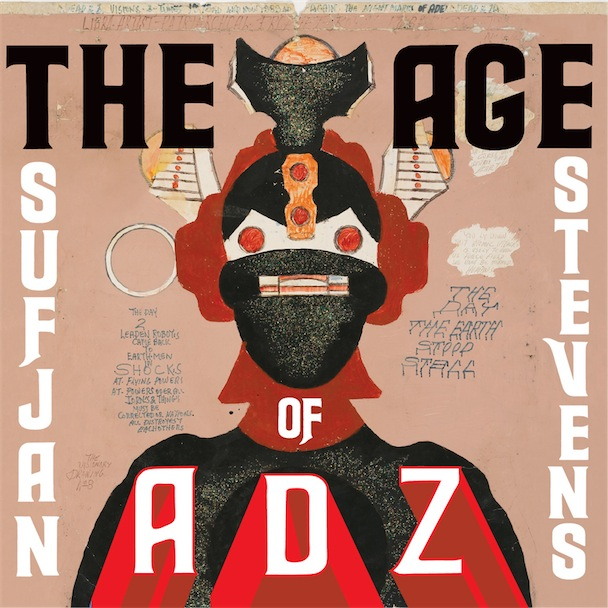Reviews
Sufjan Stevens’ “The Age of Adz” features plenty of tension and synths

The Age of Adz
Sufjan Stevens
Release Date: Oct 12, 10
- 1
- 2
- 3
- 4
- 5
- 6
- 7
- 8
- 9
- 10
Is Sufjan Stevens is the Joaquin Phoenix of the indie music world? First, he proposes an impossible-sounding “50 states” album project that he later admits is, just that—impossible. Then, he starts making cryptic statements about how music may not be for him anymore. While we all now know that Phoenix’s midlife rap crisis is a hoax, it seemed until recently that Stevens might really be quitting music once and for all. Then, he releases an album-sized EP…and a full-length album. Jigga wha? The Age of Adz, that’s “wha.”
But this is not the banjo-plucking Sufjan of yore. This is the Sufjan that lives for complicated orchestration, electronic influences, and 25-minute long tracks. And please—don’t make my mistake and assume that album title is some kind of allusion to our ad-saturated culture…it’s a reference to the apocalyptic artwork of schizophrenic artist Royal Robertson. Go ahead and let that color your listening of the album—it’ll help.
“Futile Devices” begins innocuously enough. We’re all used to the calming effect of his falsetto by now. But the minimalism of the track is slightly disconcerting. The harshly plucked notes that come in at around 1:10 create a simplistic tension. However simple it is though, the way it builds over the album makes listening to The Age of Adz in its entirety fairly intense. The tension is kicked up about 20 notches in time for “Too Much,” a seven-minute amalgamation of nearly every electronic sound that I’ve heard before. Frankly, my first thought was that it sounded like a clunkier Postal Service. Sorry, Sufjan. Give me time, and I’ll warm to this sound.
Well, I warmed right up to the next track, “The Age of Adz.” It’s got a cinematic intro, and the energy that it creates carries over into the chorus. It’s another long track, but the choral parts, brass, strings, and electronic parts all come together to make an interesting mini-overture. At this point though, I couldn’t help but wonder how this kind of effort could be sustained over the remaining nine tracks. I’m physically tired while listening to the album. Try to relax and enjoy listening when you’re hearing choral parts mashed up against what sounds like a robot being built. It’s a fascinating juxtaposition, yes, but not one that lends itself to inactive listening.
Thankfully, tracks like “Now That I’m Older” and “Vesuvius” offer much-needed breathers. Even though it’s an anomaly when compared to the general sound of the album, “Now That I’m Older” is my favorite track. The haunting choral parts, the simple piano, and the overall dissonance that he creates throughout the track are all stunning. Yes, there’s still a palpable tension due to said dissonance, but it’s not as unbearable as it is on the other tracks.
Enter “Impossible Soul.” It’s a 25-minute track that I still can’t form any worthwhile opinions about. It’s a slow jam, an electronic showpiece, and plenty of other things. I just can’t bring myself to feel anything towards it besides “way to be able to write a 25-minute song, kiddo!”
That’s my issue with this album: I can’t help but be in awe of his musical prowess. He has such vision when it comes to crafting these complex tracks. It’s as if he’s trying to say that his creative mid-life crisis is over, and to prove it, he’s going to put everything he’s ever tried on a track into one album. On the other hand, I can’t imagine listening to this on any kind of regular basis. Color me torn, readers. My desire to applaud his talent has won out though, and my appreciation of his orchestration skills will compel me to listen to it at least a couple more times.